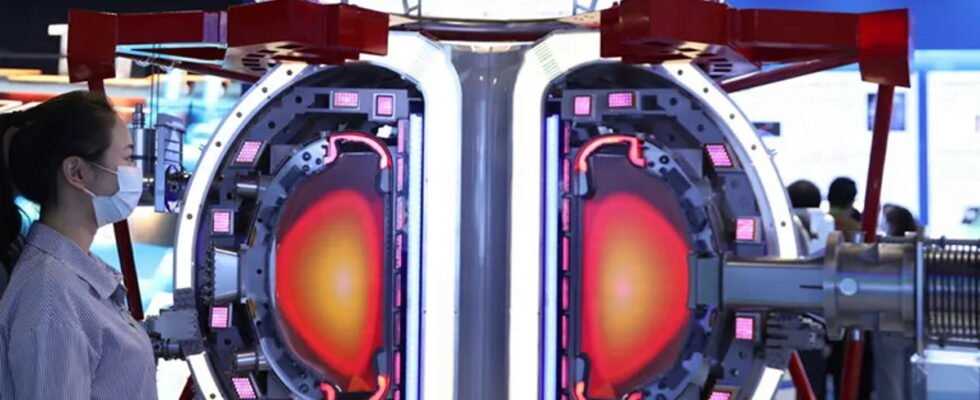Model of a tokamak, a key part of the nuclear fusion process for generating electricity.
DeepMind, owned by Alphabet, has developed promising artificial intelligence (AI) to control magnetic devices that hold super-hot, unruly plasma in a stable configuration, enabling nuclear fusion for power generation.
These plasma confinement devices, called tokamaks, are formed using a series of high-powered magnetic coils to create a vessel in which the plasma is controlled at temperatures as hot as the core of the sun. Properly confined plasma can allow nuclear fusion to occur between hydrogen atoms and is being studied as a sustainable method of generating electricity.
Researchers from DeepMind and the Swiss Plasma Center (SPC) at EPFL explain in an article published in Nature how they helped create a set of DeepMind AI algorithms capable of controlling the shape of the plasma inside the vessel.
An AI specialized in nuclear fusion
The Swiss Plasma Center has a “variable configuration tokamak” vacuum vessel designed to test plasma confinement for nuclear fusion. The center needed a way to ensure that they could reliably choose the correct values for each variable, such as voltage, for the control system’s plasma confinement.
The Swiss Plasma Center already had a well-informed simulator, but its users still had to perform lengthy calculations to determine the correct value for each variable in the control system, the article mentions.
With the right values, the control system can confine the plasma so that, for example, it does not collide with the walls of the tokamak’s vacuum vessel, in which case the plasma would deteriorate.
DeepMind AI trained on the Swiss Plasma Center simulator
The researchers claim to have created a “previously undescribed architecture for the design of the tokamak’s magnetic controller, which autonomously learns to command all of the control coils.” This architecture can reduce the effort required to produce new plasma configurations.
According to the Swiss Plasma Center blog, DeepMind’s AI, which was trained on its simulator, can create and maintain specific plasma configurations, including, as the article describes, “elongated and conventional shapes, as well as than advanced configurations, such as negative triangularity and “snowflake” configurations”.
DeepMind and SPC have also successfully run the algorithms on SPC’s real variable-configuration tokamak, not just its simulator. They also demonstrated a sustained pattern of two distinct plasma “droplets” within the vessel.
Source: ZDNet.com
